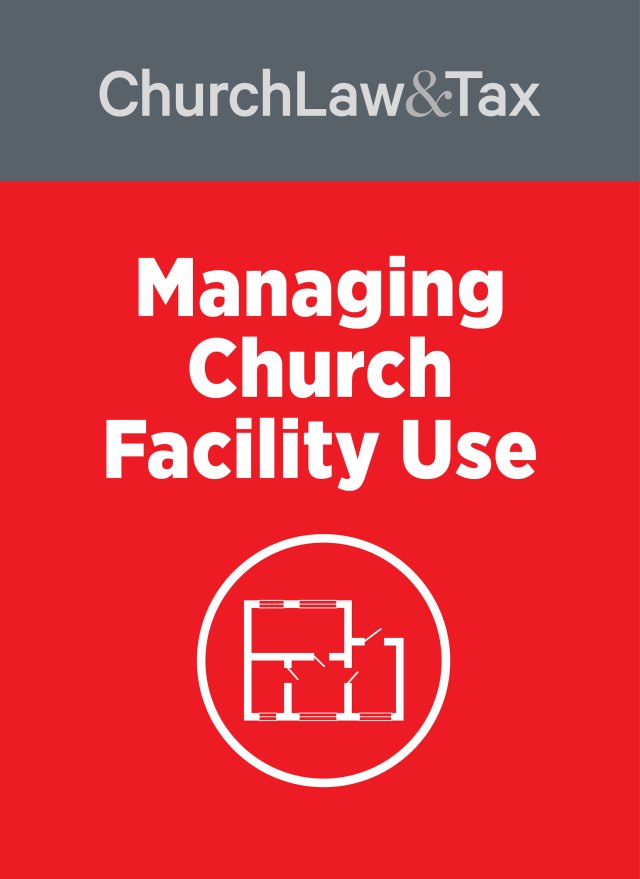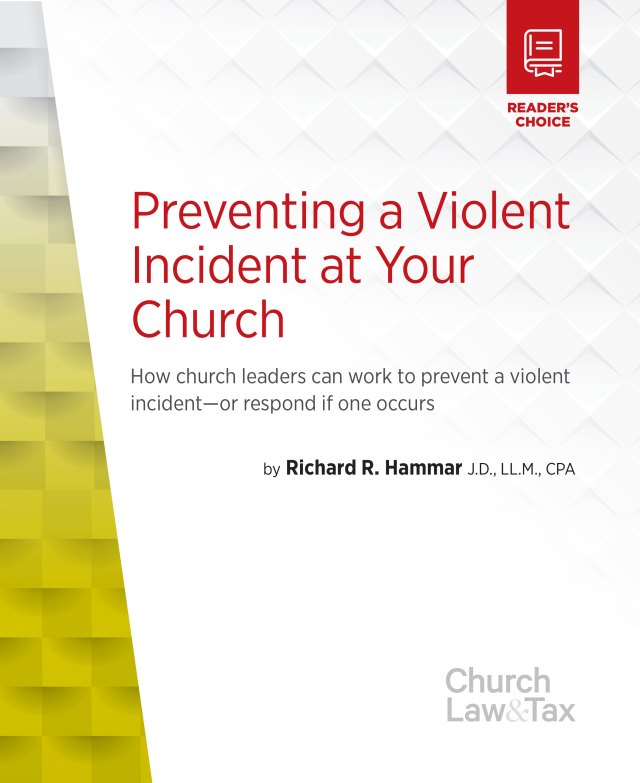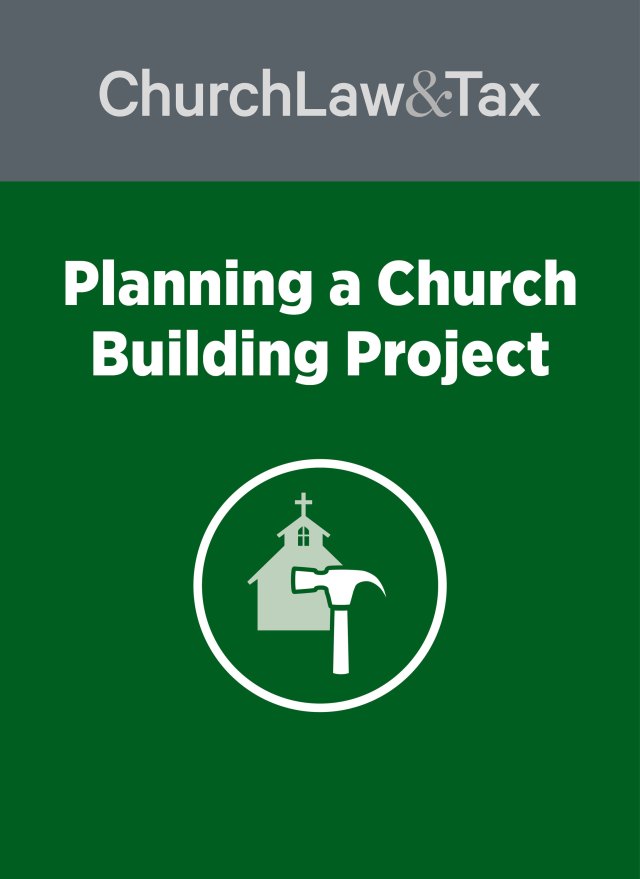Key point 7-17. Churches do not have to tolerate persons who disrupt religious services. Church leaders can ask a court to issue an order barring the disruptive person from the church’s premises. If the person violates the order, he or she may be removed from church premises by the police, and may be found to be in contempt of court.
Removing Disruptive Individuals
* A California court ruled that a disruptive person who engaged in outbursts during church services and harassed members before and after worship services could be legally restrained from the church property. It’s every pastor’s worst nightmare—a disgruntled person disrupting a worship service. Unfortunately, such incidents do occur, so church leaders should be familiar with the legal principles that apply. A recent case in California addressed this issue. A former member (“Nancy”) of a church disagreed with how the pastor and other church leaders were managing the church. Over the course of several months, she engaged in disruptive conduct on church premises. Sometimes she entered the church, walked up to certain members, and shouted that they were “adulterers” or “agents of Satan” or “demon worshipers.” The pastor was one of her prime targets. She approached him and shouted that he was an agent of Satan because he allowed divorced and remarried persons to participate in church ministries. Members of the young adult ministry were so intimidated by her conduct that they met secretly. Those wishing to attend had to dial a telephone number to learn the time and location of the meetings.
On one occasion, Nancy confronted a married couple inside the church, saying that they were adulterers, living in sin, and would not go to heaven. Later, when the couple was leaving, they had trouble starting their car. Nancy yelled out that “things happen” to people who live in sin and that the car would not start because God was punishing them. The pastor and others repeatedly asked Nancy not to return to the church, and to attend services at a different church where she would respect the leadership. Nancy refused these requests and said she would not change her behavior.
In January of 2002 the church held a membership meeting in order to address Nancy’s membership. She was allowed several hours to present her views. Church leaders conducted the meeting in accordance with all bylaw and corporate requirements. At the end of the meeting, the church voted to terminate Nancy’s membership. She was then informed that she could not participate in church activities. The church also sent her a letter demanding that she “immediately cease and desist” from her “incessant harassment and intimidation of the minister, the leaders, the trustees, and the membership.” The letter also contained the following warning: “You are specifically not welcome to enter upon the church premises. If you attempt to enter upon the church premises, you will be considered a trespasser.”
As expected, the letter proved fruitless. Nancy continued to disrupt worship services. In the words of the pastor, “Nancy’s actions and course of conduct have caused me to suffer substantial emotional distress. I feel tense delivering sermons. Her constant harassment has made it extremely difficult for me to minister to my congregation. I have trouble concentrating because I know she will confront me before, during, and after worship services or Bible study.” As a result of Nancy’s conduct, the church lost members. Some of the members and children were frightened by her conduct, causing the church to cancel ministries or hold meetings in secret.
During a worship service in February of 2002 church leaders called the local police department to prevent Nancy from entering the property. While waiting for the police, she stated repeatedly that she would continue her actions because the church did not have a court order preventing her from entering the premises. After the police arrived, Nancy stood on the grass outside the church, accusing the pastor of doing the devil’s work and referring to some of the members as demons.
The church then asked a court to issue a restraining order barring Nancy from “(1) impeding ingress or egress on church premises, (2) trespassing on church property, and (3) approaching within 10 yards of, intimidating, interfering with, oppressing, or otherwise threatening the membership or leadership of the church as they enter or exit the church premises.” At a hearing a month later, a trial court found that Nancy was “making an absolute pest and nuisance of herself by shouting insults at the members of the congregation” and that she “has torn some things down off the bulletin board.” Nevertheless, the court denied the church’s application for a restraining order, stating that the requested relief, if granted, would interfere with Nancy’s constitutional right of free speech and would entangle the court in an ecclesiastical dispute. The church appealed.
A state appeals court ordered the trial court to issue the restraining order barring Nancy from church premises. The court concluded that “Nancy’s right of free speech does not trump the church’s right to prohibit her disruptive conduct on its property.” The court observed,
As a general rule, landowners … have a right to exclude persons from trespassing on private property; the right to exclude persons is a fundamental aspect of private property ownership… . Of course, ownership does not always mean absolute dominion. The more an owner, for his advantage, opens up his property for use by the public in general, the more do his rights become circumscribed by the statutory and constitutional rights of those who use it. But, in this case, the church is not an open forum. And if the expression [of speech] is inappropriate for the property or is incompatible with the intended use of the property, then the expression may be totally barred and the property is considered a non-forum. Here, the means of expression that [Nancy] insisted on exercising were incompatible with the nature of the [church’s services]. She possessed the same rights and privileges as the rest of the [congregation] attending [church services]. However, neither [her] firmness of convictions [nor] the severity of [her] disagreement with the opinions expressed by [church leaders] elevate her rights to attend and speak any higher than the rights of other Church members. Affording Nancy a right to speak any greater than the rights of others in attendance would be totally inappropriate …. Nancy seems to believe that people who want to protest or express their views have a constitutional right to do so whenever and however and wherever they please. That concept of constitutional law has been vigorously and forthrightly rejected by the United States Supreme Court. In sum, the church leaders and members were within their rights to bar Nancy from participating on the terms she demanded. Her refusal and continued presence on church property could support a valid charge of trespass.
The court concluded that the harm the church would suffer without a restraining order was considerable, and this further justified the issuance of such an order. It observed,
Here, in the absence of a restraining order, the church and the congregation would continue to suffer from Nancy’s outbursts and disruptive behavior. This is not a dispute over free speech. The church has expelled a member who was harassing the congregation and disrupting religious services. With each passing day, the church risks losing more members. And the church should not have to conduct services or meetings in secret just to avoid the interference of an expelled congregant. Without a restraining order, the church and its members would suffer irreparable harm. If a restraining order is granted, the affect on Nancy would be negligible. She would no longer be able to annoy the congregation, tear down church bulletins, or frighten children. She has said that she will continue her disruptive behavior until a court directs otherwise. That time has come.
The court also rejected Nancy’s argument that it was barred by the first amendment from resolving an internal church dispute. It noted, “There is no doctrinal issue to be decided. Nancy has not challenged the church’s decision to terminate her membership. Her expulsion is therefore a given. The church does not want her on its property, and church leaders have told her so. Yet, she keeps returning. Simply put, Nancy is a trespasser. The pertinent question, then, is whether a church or religious organization can exclude unwelcome persons from its premises. The answer is yes.”
Application. Perhaps there is a “Nancy” who attends your church. If so, this case demonstrates that the law does not guarantee such persons the unrestricted right to annoy and harass other members of the congregation. There are legal remedies that are available, if personal diplomacy fails. Church of Christ v. Superior Court, 121 Cal.Rptr.2d 810 (Cal. App. 2002).
© Copyright 2002 by Church Law & Tax Report. All rights reserved. This publication is designed to provide accurate and authoritative information in regard to the subject matter covered. It is provided with the understanding that the publisher is not engaged in rendering legal, accounting, or other professional service. If legal advice or other expert assistance is required, the services of a competent professional person should be sought. Church Law & Tax Report, PO Box 1098, Matthews, NC 28106. Reference Code: m21 c0502




